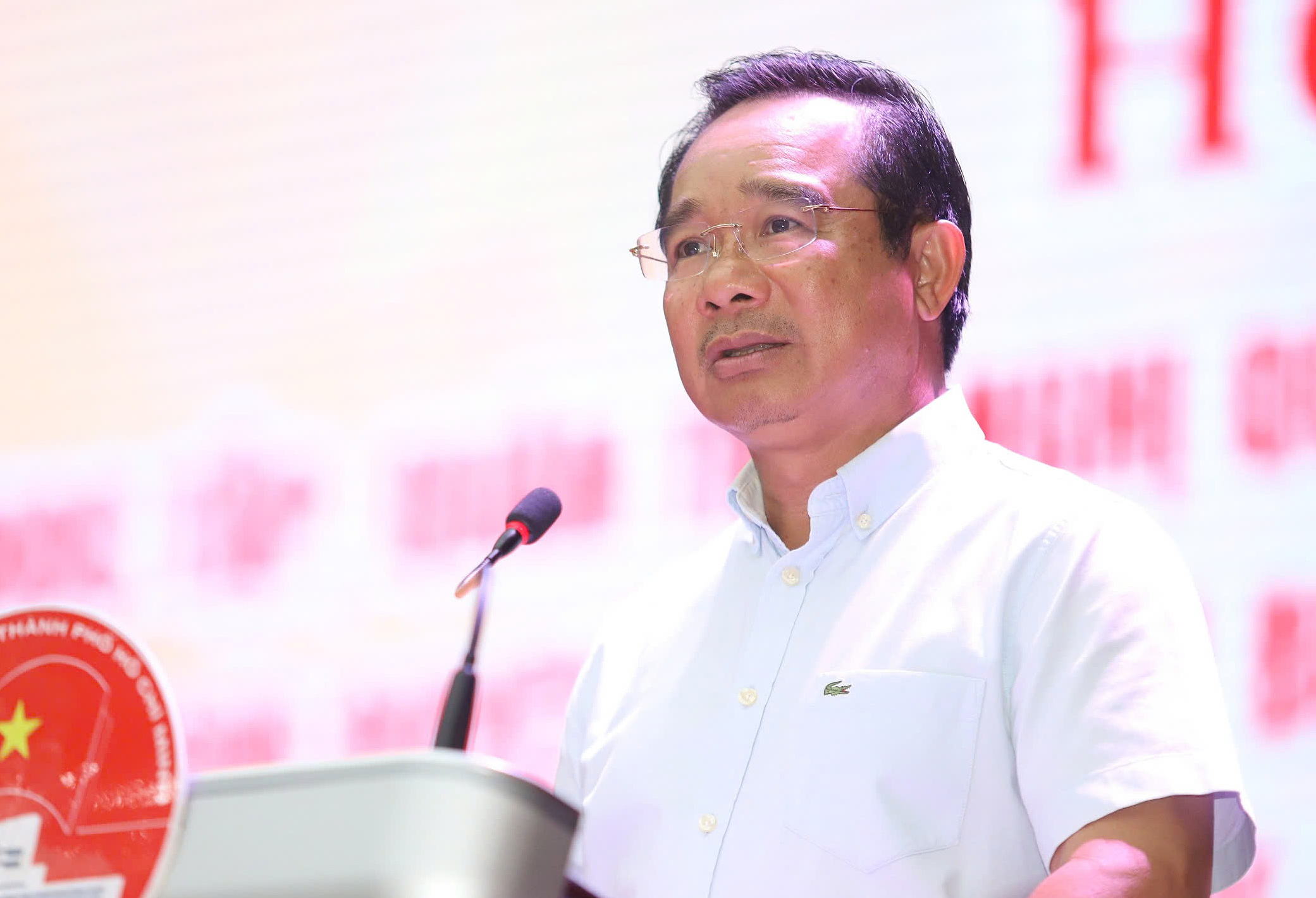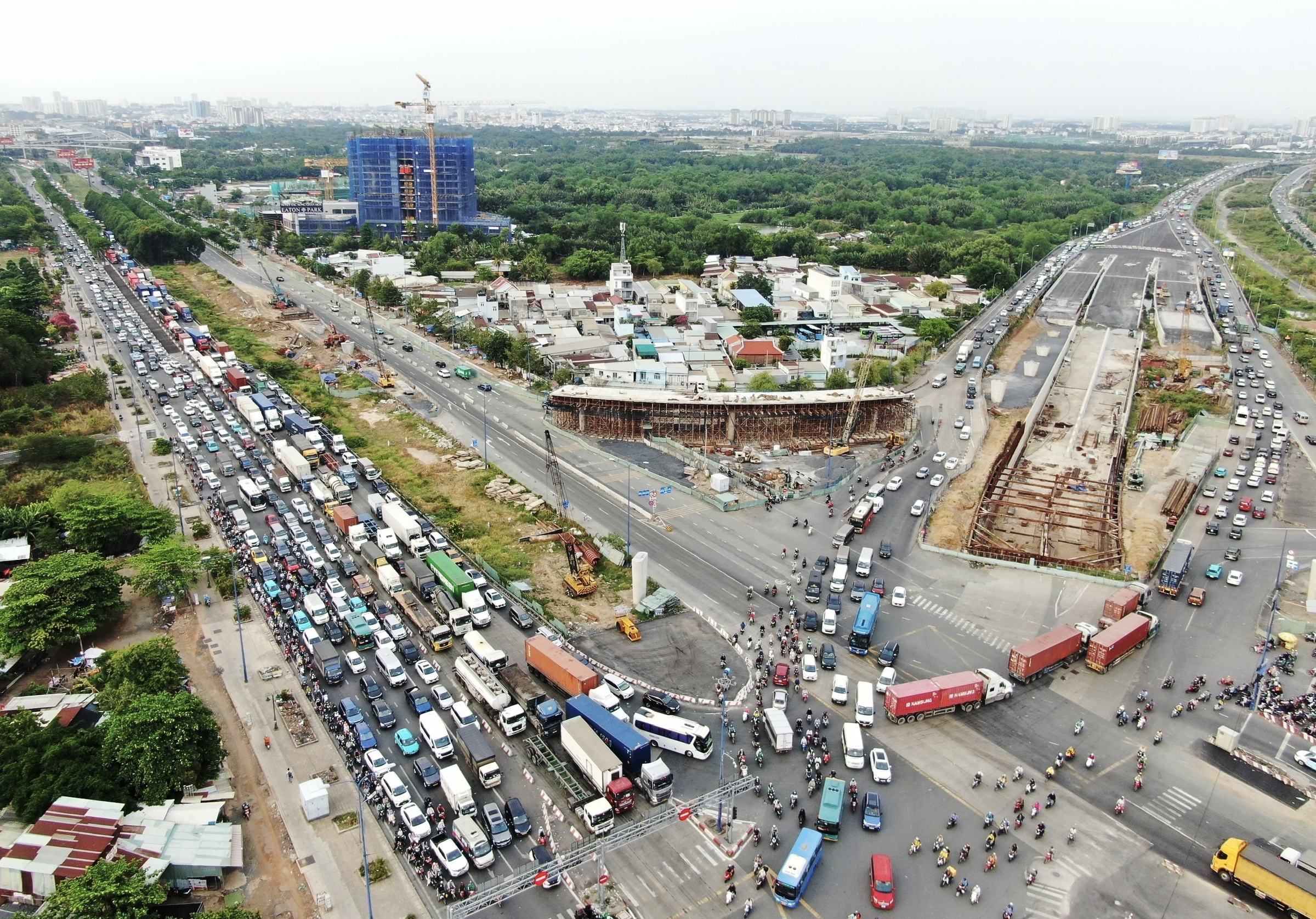At a conference to disseminate the resolution and action program of the Ho Chi Minh City People's Committee for the 2025-2030 term, Chairman Nguyen Van Duoc stated that land clearance is a key performance indicator for Party committees and administrations at all levels. Communes and wards that fail in this task will have their leaders held accountable.
According to Mr. Duoc, the city has identified three breakthrough areas: institutions, infrastructure, and human resources. Regarding transport infrastructure and construction, land clearance is a crucial factor, and the primary responsibility lies at the grassroots level. "Without land, there is no infrastructure, and without infrastructure, there is no development," he said.
 |
Chairman of the Ho Chi Minh City People's Committee Nguyen Van Duoc speaking at the conference. Photo: An Phuong |
Chairman of the Ho Chi Minh City People's Committee Nguyen Van Duoc speaking at the conference. Photo: An Phuong
However, the chairman acknowledged that in the initial months of the new two-level local government, communes and wards have faced difficulties, lacking personnel and expertise. Some officials are hesitant to make decisions or sign compensation plans, partly due to a lack of support staff. The city plans to address this by providing additional support.
As an initial step, the Department of Agriculture and Environment will establish "task forces" to work directly with communes and wards. These teams will provide hands-on guidance, allowing local officials to learn through practical experience and become more proactive.
Specifically, the city will assign officials to support individual tasks and projects, such as Ring Road 3, the expansion of National Highways 13 and 22, the extension of Vo Van Kiet and Nguyen Van Linh streets, and the relocation of houses along canals.
"Leaders will face decisions, some right and some wrong, but as long as we act fairly and objectively," Mr. Duoc said, urging commune and ward officials to be decisive for the benefit of the city and their localities. He assured them of the city's support and protective mechanisms.
 |
The An Phu intersection at the eastern gateway of Ho Chi Minh City has been under construction for years and is still unfinished. Photo: Giang Anh |
The An Phu intersection at the eastern gateway of Ho Chi Minh City has been under construction for years and is still unfinished. Photo: Giang Anh
According to the chairman, land clearance will be subject to regular inspection and supervision by Party committees at all levels. This will also serve as a basis for evaluating Party organizations, administrations, and individual performance, ensuring that "if the machine is running, every cog must turn."
The chairman also acknowledged traffic congestion and flooding as two pressing issues, often referred to as "specialties" of the country's most populous city. However, with determination and decisive action from the entire system, he believes the city can address the motorbike problem within 10 years, provided there is adequate infrastructure.
As of mid-September, Ho Chi Minh City has disbursed over 45% of its public investment capital. To meet the plan, it must disburse 590 billion VND per day over the remaining three months. At a meeting on the city's socio-economic performance in the first 8 months, Mr. Duoc identified compensation and site clearance as the biggest bottlenecks.
Ho Chi Minh City was initially assigned by the government to disburse nearly 118,950 billion VND in public investment this year. After merging with Binh Duong and Ba Ria - Vung Tau, the city's public investment plan was adjusted to over 6,800 projects, with a total capital of nearly 156,000 billion VND, of which nearly 119,000 billion VND was assigned by the Prime Minister. This is the highest level ever for a single locality.
Le Tuyet












